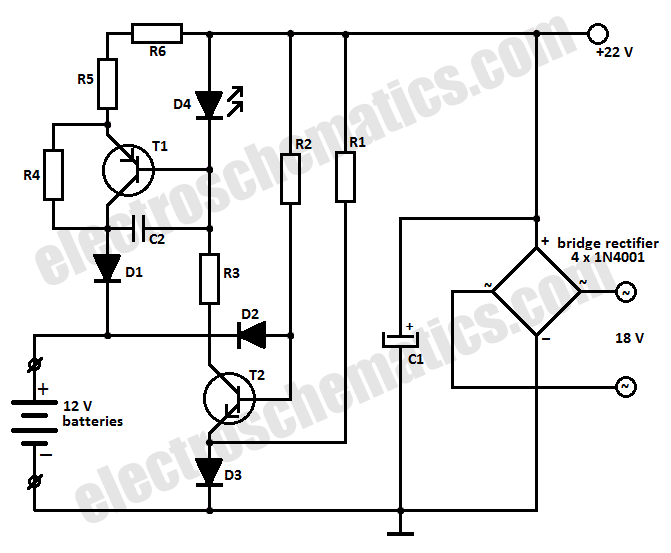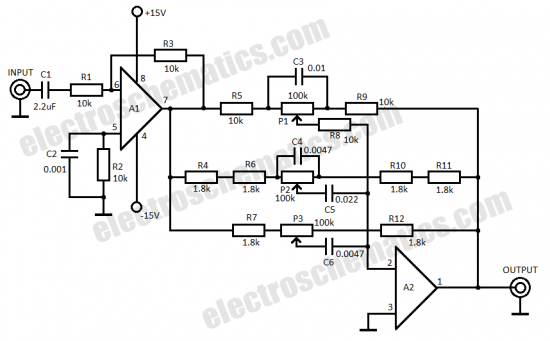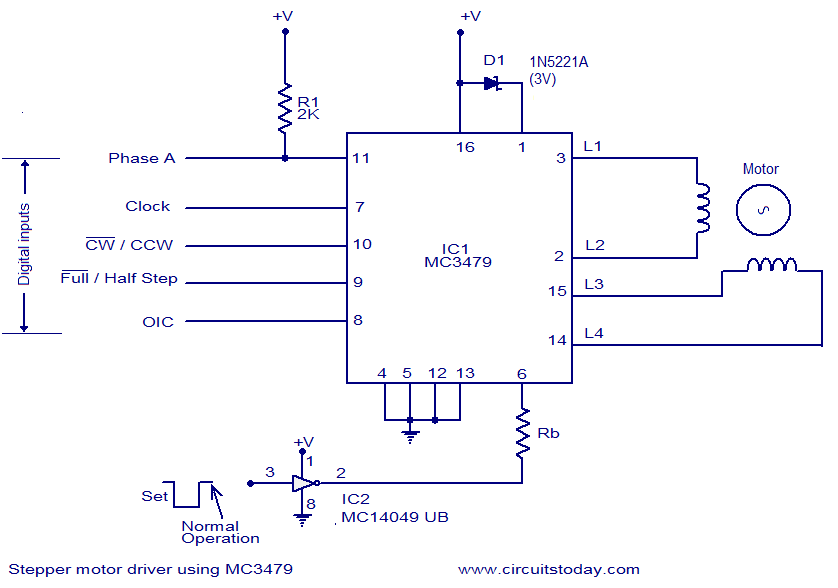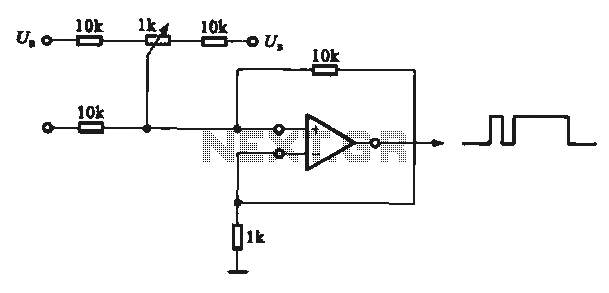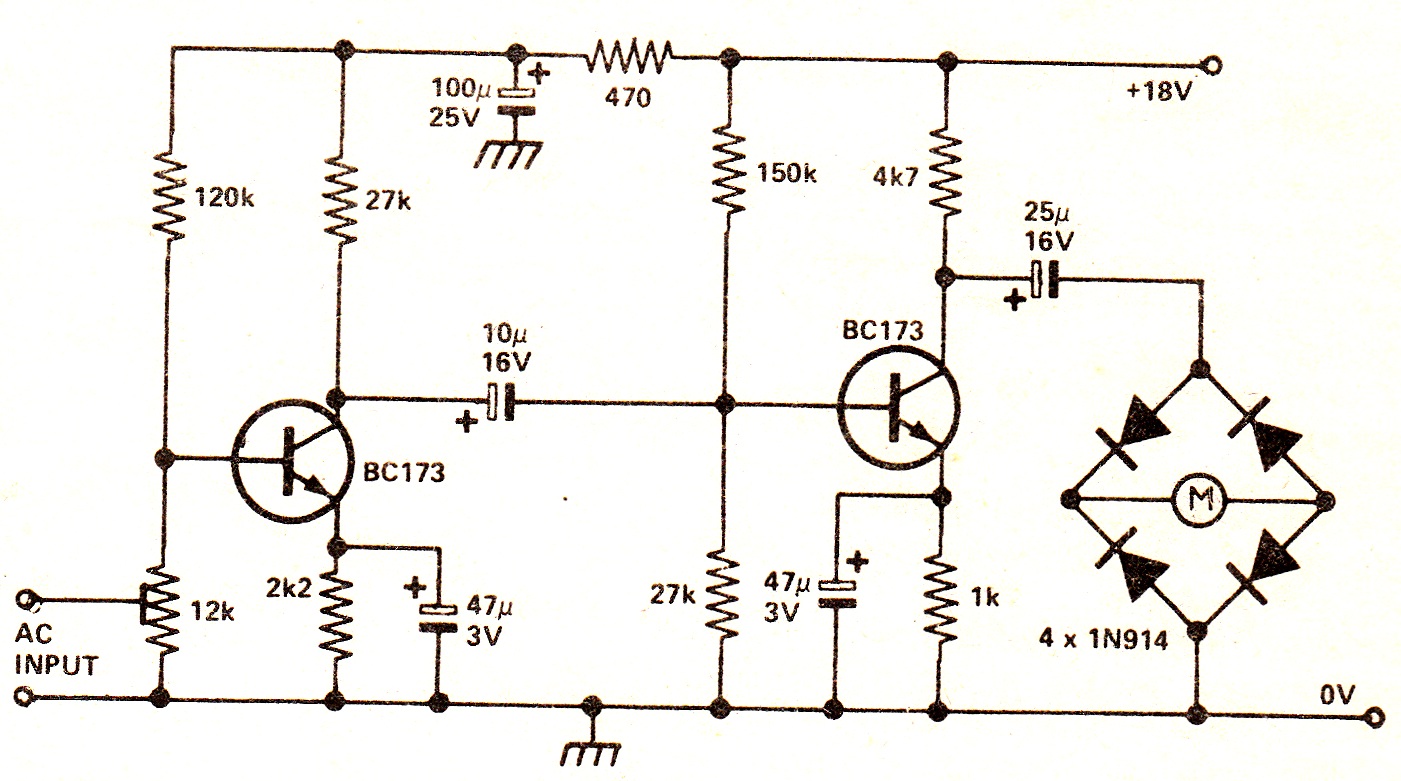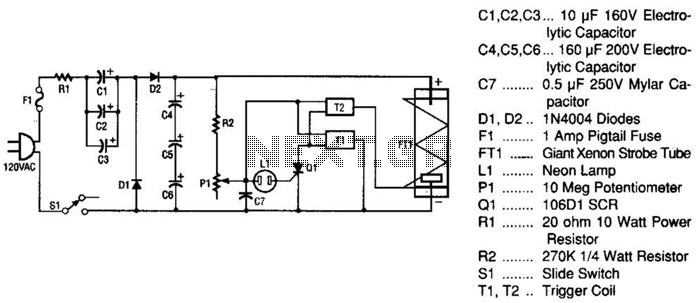
Parallel high-speed current driver circuit diagram OPA660
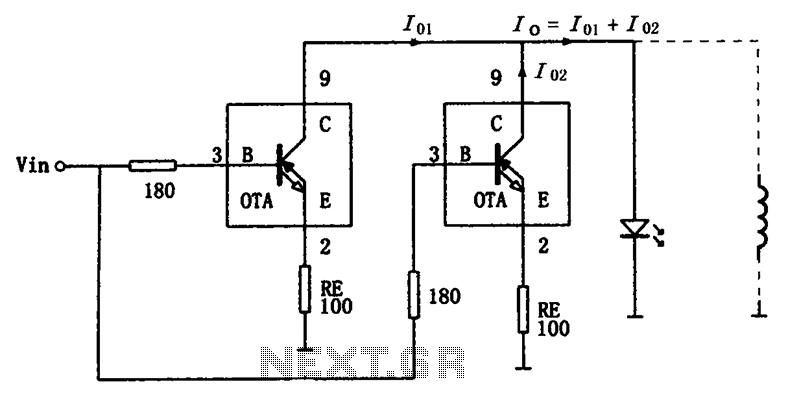
The high-speed parallel current drive circuit utilizes the OPA660 operational transconductance amplifier (OTA). An input signal, Vin, is connected to a 180-ohm resistor equivalent device at the base (pin 3) of the OPA660. The collector (pin 8) is directly connected to the load. This configuration allows the circuit to provide current to the load, effectively doubling the current flowing through a single OTA. The OPA660 has a maximum output current of 15mA, while the parallel configuration can deliver a maximum output current of 30mA. For applications requiring even higher current, multiple OPA660 op-amps can be connected in parallel to achieve the desired load current. The 180-ohm external resistor at the base serves to limit the input signal, preventing self-oscillation of the amplifier and reducing peaking in frequency response. Additionally, a negative feedback resistor (RE), which can range from tens to several hundred ohms, is connected to the emitter. This resistor enhances the dynamic performance, linearity, and stability of the amplifier's input impedance, although it may lead to a reduction in the OTA's transconductance. Adjusting the resistance of RE enables fine-tuning of the output current.
The high-speed parallel current drive circuit is designed for applications that require precise control of output current while maintaining high-speed performance. The OPA660 OTA is specifically chosen for its ability to deliver significant output current, making it suitable for driving various loads, including capacitive and resistive components. The input signal, Vin, is effectively conditioned by the 180-ohm resistor, which mitigates the risk of self-oscillation that could compromise circuit stability. This resistor also plays a crucial role in shaping the frequency response of the amplifier, ensuring that the circuit operates efficiently across the desired frequency range.
In parallel configurations, the OPA660s work cohesively to provide the necessary current without exceeding individual device limits. This approach not only enhances the overall output capability but also ensures redundancy, as the failure of one OTA does not significantly impact the performance of the entire circuit. The inclusion of the negative feedback resistor, RE, contributes to the circuit's robustness by stabilizing the gain and improving linearity. However, it is essential to select the appropriate value for RE, as it directly influences the transconductance of the OTA, thereby affecting the output current. The careful design of this circuit allows for versatility in applications, from audio amplification to signal conditioning in communication systems, where high-speed and high-current drive capabilities are paramount. As shown for the high-speed parallel current drive circuit. Input signal Vin have been added 180 resistor equivalent device OPA660 special OTA transistor base B (pin 3), the co llectors C (pin 8) connected directly, and connected with the load, while providing current to the load, thus the current flowing through a single OTA twice the load, because the OTA OPA660 maximum output current of 15mA, while the parallel circuit provides a maximum output current up to 30mA. When you need more current, multiple OPA660 op amps in parallel, in order to obtain the desired load current.
Input (B pole) 180 external resistor having a limiting effect, while preventing self-oscillation occurs amplifier and reduce the phenomenon peaking frequency characteristics. Connected to the emitter of the negative feedback resistor RE (tens of ohms to several hundred ohms) can increase the number of dynamic index linear amplifier input impedance and stability, but the OTA transconductance will decline, it can be seen, RE appropriately changing the resistance can adjust the size of the output current.
The high-speed parallel current drive circuit is designed for applications that require precise control of output current while maintaining high-speed performance. The OPA660 OTA is specifically chosen for its ability to deliver significant output current, making it suitable for driving various loads, including capacitive and resistive components. The input signal, Vin, is effectively conditioned by the 180-ohm resistor, which mitigates the risk of self-oscillation that could compromise circuit stability. This resistor also plays a crucial role in shaping the frequency response of the amplifier, ensuring that the circuit operates efficiently across the desired frequency range.
In parallel configurations, the OPA660s work cohesively to provide the necessary current without exceeding individual device limits. This approach not only enhances the overall output capability but also ensures redundancy, as the failure of one OTA does not significantly impact the performance of the entire circuit. The inclusion of the negative feedback resistor, RE, contributes to the circuit's robustness by stabilizing the gain and improving linearity. However, it is essential to select the appropriate value for RE, as it directly influences the transconductance of the OTA, thereby affecting the output current. The careful design of this circuit allows for versatility in applications, from audio amplification to signal conditioning in communication systems, where high-speed and high-current drive capabilities are paramount. As shown for the high-speed parallel current drive circuit. Input signal Vin have been added 180 resistor equivalent device OPA660 special OTA transistor base B (pin 3), the co llectors C (pin 8) connected directly, and connected with the load, while providing current to the load, thus the current flowing through a single OTA twice the load, because the OTA OPA660 maximum output current of 15mA, while the parallel circuit provides a maximum output current up to 30mA. When you need more current, multiple OPA660 op amps in parallel, in order to obtain the desired load current.
Input (B pole) 180 external resistor having a limiting effect, while preventing self-oscillation occurs amplifier and reduce the phenomenon peaking frequency characteristics. Connected to the emitter of the negative feedback resistor RE (tens of ohms to several hundred ohms) can increase the number of dynamic index linear amplifier input impedance and stability, but the OTA transconductance will decline, it can be seen, RE appropriately changing the resistance can adjust the size of the output current.
